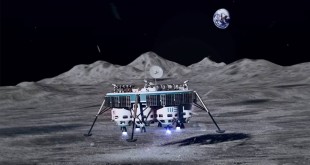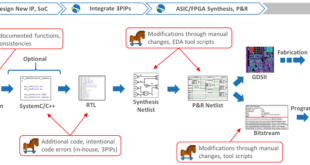Related Articles
Introduction:
In the ever-changing landscape of global security, military tanks stand as formidable symbols of strength and strategic prowess. As integral components of land warfare, tanks have undergone significant evolution, from their inception in the early 20th century to their current state-of-the-art designs.
The global military tanks industry stands at the forefront of defense innovation and strategic preparedness, driven by geopolitical tensions and technological advancements. As recent reports project significant growth in the market, it becomes imperative to explore the factors shaping this expansion and the challenges it faces. In this article, we delve into the key trends, challenges, and opportunities defining the global military tanks industry.
Historical Significance:
The origins of military tanks can be traced back to World War I, where the need to break the stalemate of trench warfare led to the development of armored vehicles. The British Mark I tank, introduced in 1916, heralded a new era in warfare, offering mobility, firepower, and protection on the battlefield. Subsequent conflicts, such as World War II, saw the widespread use of tanks, where iconic designs like the German Tiger and the Soviet T-34 played pivotal roles in shaping battlefield outcomes
The tank’s design has continuously evolved to address changing battlefield threats:
- Early Tanks: These lumbering machines were slow and prone to mechanical failures, but they paved the way for future advancements.
- WWII Tanks: Tanks became more powerful and agile, with iconic designs like the T-34 and the M4 Sherman dominating the battlefields.
- Cold War Era MBTs: The rise of anti-tank missiles led to the development of heavily armored MBTs like the M1 Abrams and the T-72.
Trends Driving Growth:
Recent analysis forecasts substantial growth in the global tanks market, with projections reaching $3.06 billion by 2028, fueled by a compound annual growth rate (CAGR) of 5.9%. Increased military spending, particularly in regions like the Asia-Pacific, coupled with rising defense budgets worldwide, are primary drivers of this growth. Additionally, Western Europe is expected to lead in growth rates, signaling increased procurement and modernization efforts.
Technological Advancements:
Technological advancements play a pivotal role in shaping the evolution of military tanks. Innovations such as active protection systems, electric and hybrid propulsion systems, and unmanned and autonomous technologies are transforming tanks into highly sophisticated combat vehicles. These advancements aim to enhance battlefield effectiveness, crew safety, and overall operational capabilities, positioning tanks as future-ready assets in modern warfare scenarios.
Modern tanks are equipped with state-of-the-art features such as composite armor, reactive armor, and advanced targeting systems. Furthermore, advancements in firepower, including smoothbore cannons, guided missiles, and advanced targeting systems, have enhanced the lethality and versatility of tanks on the battlefield.
- Active Protection Systems (APS): These sophisticated systems can detect and neutralize incoming projectiles, enhancing tank survivability.
- Networked Warfare: Modern tanks are increasingly integrated into battlefield networks, allowing for real-time data sharing and coordinated maneuvers.
- Unmanned Turret Systems: Concepts for remotely-controlled turrets are emerging, potentially reducing crew risk and improving operational flexibility.
Furthermore, digitalization and connectivity have revolutionized tank operations, enabling real-time data sharing, situational awareness, and coordinated maneuvers. Digitalization and connectivity have transformed tanks into networked platforms, enabling real-time data sharing, situational awareness, and coordinated operations.
A Growing Market Fueled by Geopolitics
The strategic importance of tanks in national defense and global security cannot be overstated. As geopolitical tensions escalate, tanks become crucial assets in both deterrent and defensive strategies. Anticipated regional disputes drive the demand for military tanks, emphasizing their role in force projection and defense readiness. Consequently, the market direction is closely aligned with shifts in the geopolitical landscape.
The global market for Main Battle Tanks (MBTs), the workhorses of tank forces, is expected to reach $6.9 billion by 2030, driven by several factors:
- Heightened Geopolitical Tensions: Regional conflicts and concerns about potential adversaries are pushing nations to modernize and upgrade their tank fleets.
- Focus on Self-Reliance: Many countries are investing in domestic tank production to reduce dependence on foreign suppliers.
- Technological Advancements: New technologies like active protection systems and advanced weaponry are increasing the capabilities and lifespan of tanks.
Roles in Recent Conflicts
In recent conflicts, tanks have continued to play a critical role in both conventional and asymmetric warfare. In conflicts such as the Gulf War, the invasion of Iraq, and the ongoing conflict in Ukraine, tanks have been deployed to seize territory, destroy enemy positions, and provide fire support to ground troops.
Additionally, tanks have proven indispensable in urban warfare scenarios, where their firepower and protection are essential for clearing enemy strongholds and neutralizing threats in built-up areas. Furthermore, the emergence of hybrid warfare tactics, blending conventional and unconventional methods, has underscored the enduring relevance of tanks in modern warfare.
Key Players:
The global military tank industry is characterized by a handful of key players who dominate the market with their advanced designs and cutting-edge technologies. Companies such as General Dynamics Corporation (United States), Rheinmetall AG (Germany), BAE Systems plc (United Kingdom), and NORINCO Group (China) are among the leading manufacturers of military tanks worldwide. These companies boast extensive experience, robust R&D capabilities, and a diverse portfolio of tank models catering to various operational requirements.
In the global tank industry, several key players stand out for their contributions to defense capabilities and technological advancements. Oshkosh Defense LLC is recognized for its innovative tank solutions tailored to modern battlefield requirements. Similarly, General Dynamics Corporation boasts a rich legacy of delivering cutting-edge tank technologies and combat systems to defense forces worldwide. BAE Systems plc offers a diverse portfolio of armored vehicles, including tanks, playing a crucial role in enhancing defense capabilities. Textron Inc. specializes in manufacturing tanks and unmanned systems, contributing significantly to defense operations. Navistar International Corporation is known for producing robust tanks, providing essential support for military missions.
China North Industries Group Corporation Limited (NORINCO) is a major player in the tank industry, renowned for its comprehensive range of armored vehicles and military equipment. Rheinmetall AG, Ukroboronprom, and UralVagonZavod Corporation are also prominent manufacturers of tanks, each contributing advanced technologies to defense forces worldwide. Additionally, Hyundai Rotem Company, Nexter Group, Krauss-Maffei Wegmann GmbH & Co. KG, and IVECO S.p.A. are esteemed manufacturers of tanks, catering to diverse defense requirements. Elbit Systems Ltd., INKAS Armored Vehicle Manufacturing, and International Armored Group specialize in providing innovative tank solutions for military protection and security.
Hanwha Defense, SABIEX International, Plasan Sasa Ltd., and Panhard General Defense SAS are renowned for their expertise in tank manufacturing and defense solutions. Mitsubishi Heavy Industries Ltd., Singapore Technologies Engineering Ltd., and Leonardo S.p.A. are global leaders in defense technology, offering advanced tank solutions and defense systems. Denel Land Systems (Pty) Ltd and Tata Motors Limited play significant roles as tank manufacturers in South Africa and India, respectively, contributing to the defense capabilities of their nations. KMW + Nexter Defense Systems, FNSS Savunma Sistemleri A.S., Avibras Indústria Aeroespacial S.A., Rostec State Corporation, and ZTS – TEES Martin s.r.o. are also key players in the global tank industry, providing state-of-the-art solutions for defense forces worldwide.
Challenges and Opportunities:
Despite the promising growth prospects, the military tanks industry faces several challenges. High production costs associated with main battle tanks pose a significant barrier to market growth. State-of-the-art features and complex manufacturing processes drive up expenses, potentially impeding market progress. However, opportunities arise from trends such as the increased adoption of robotic and autonomous tank platforms. These cutting-edge systems streamline defense operations and offer innovative solutions to operational challenges.
Recent Developments and Trends:
In recent years, the military tank industry has witnessed several notable developments and trends. The emergence of unmanned ground vehicles (UGVs) and autonomous systems has revolutionized the capabilities of tanks, enabling unmanned reconnaissance, surveillance, and combat missions. Moreover, environmental concerns and technological advancements have led to the development of greener and more fuel-efficient tank designs, incorporating hybrid propulsion systems and alternative fuels. Additionally, geopolitical dynamics and evolving threats have prompted militaries to invest in upgrading their tank fleets with enhanced protection, firepower, and mobility capabilities.
Moreover, environmental considerations and geopolitical dynamics are driving the development of greener and more sustainable tank designs, incorporating hybrid propulsion systems and alternative fuels. Additionally, the rise of urbanization and megacities presents new challenges and opportunities for tank warfare, requiring adaptability and innovation in design and tactics.
Future Prospects:
Looking ahead, the global military tank industry is poised for continued growth and innovation. Emerging technologies such as artificial intelligence (AI), augmented reality (AR), and additive manufacturing are expected to further enhance the capabilities and performance of tanks on the battlefield.
While some predict the decline of tanks due to advancements in anti-tank weaponry, others believe they will continue to play a crucial role:
- Urban Warfare: Tanks still offer unmatched firepower and protection in urban environments where maneuverability is limited.
- Combined Arms Warfare: When used effectively as part of a combined arms strategy, tanks can be highly effective in deterring aggression and maintaining a military edge.
Moreover, the increasing emphasis on urban warfare and counterinsurgency operations is likely to drive the development of specialized tank variants optimized for operating in complex urban environments. Additionally, geopolitical tensions and regional conflicts are expected to drive demand for modernizing and expanding tank fleets across various nations.
Conclusion:
In conclusion, the global military tank industry remains a vital component of modern defense strategy, providing nations with essential capabilities for land warfare and national security. Global military tanks industry is poised for significant growth, driven by geopolitical tensions, technological advancements, and increased defense spending. With ongoing technological advancements and evolving operational requirements, the future of military tanks is poised for innovation and transformation. As tanks evolve into highly sophisticated combat vehicles, the industry must navigate challenges such as high production costs while capitalizing on opportunities presented by emerging trends. By embracing emerging technologies, collaborating with strategic partners, and adapting to changing threats, the military tank industry will continue to play a crucial role in safeguarding global stability and security in the 21st century.
References and Resources also include;
https://finance.yahoo.com/news/global-military-tanks-industry-report-091500629.html
 International Defense Security & Technology Your trusted Source for News, Research and Analysis
International Defense Security & Technology Your trusted Source for News, Research and Analysis


